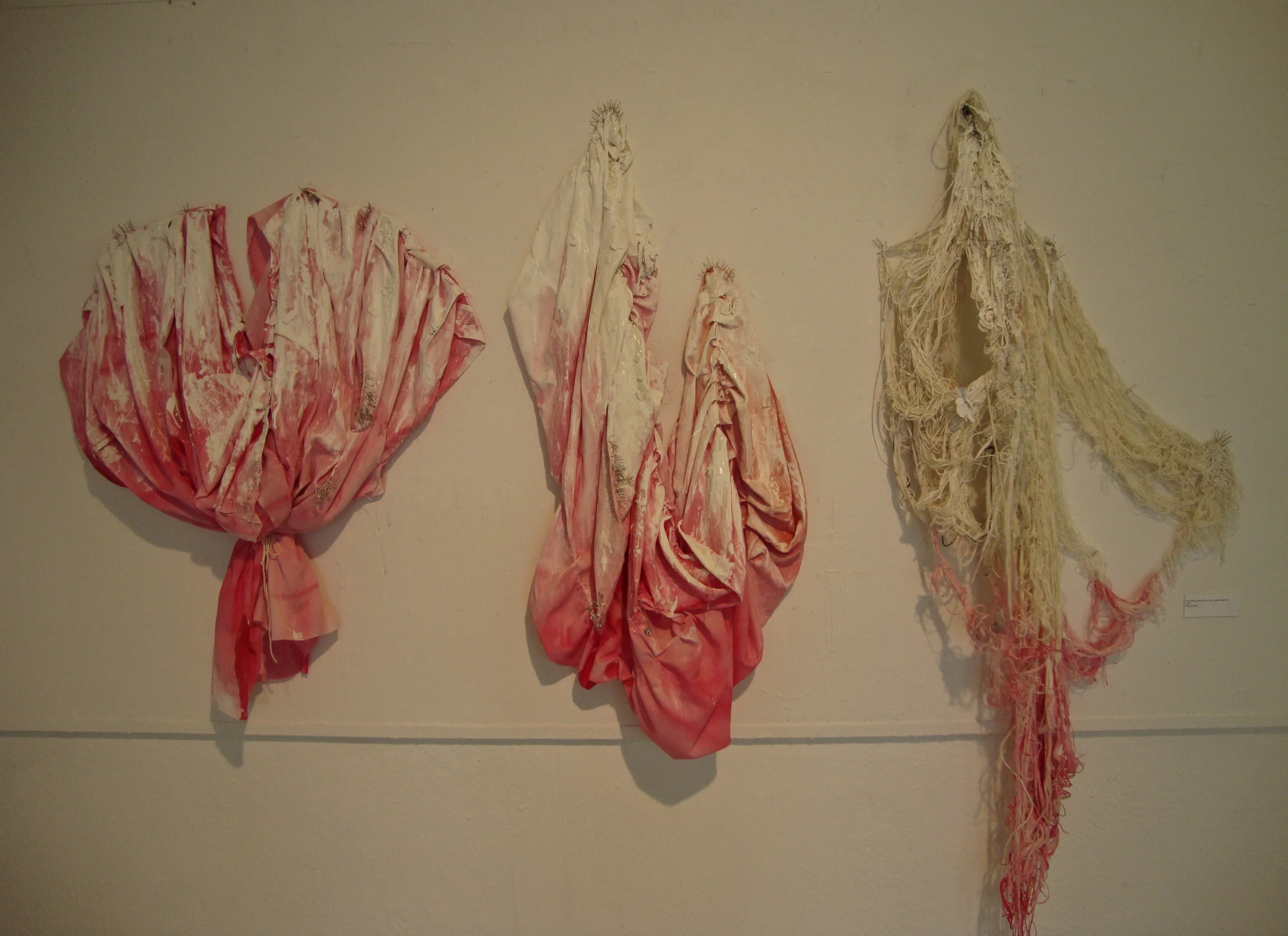Artist Statement
As an artist, my work deconstructs notions of femininity and the (female) body as seen through fashion media. Simply put, I abstract images found in fashion magazines and develop them into oil paintings and sculptural forms. The ethereal quality of my work is intentional as I intend to create a visual tension between recognizable and indistinguishable shapes. My work has been showcased in solo and group exhibitions in Southern Ontario.
“Simone Aziga, a Toronto artist, makes art from damaged fabric. ‘How I Got Over’ consists of two pink shapes suspended from the ceiling, one above the other. They recall parts of an ultrafeminine skirt or dress, layered with tulle, like a ball gown or a bridesmaid’s or ballerina’s dress.
But the outfit is torn and messy; therefore, it’s not very feminine. Threads hang down and spill on the floor. Paint has stained and hardened the fabric. Moreover, the skirt is pierced with safety pins and straight pins. Pins are meant to hold the seams together temporarily. Is the dress unfinished? Or has it been torn apart in an act of violence, or rebellion, and someone has tried to fix it?
Another work by Aziga, “You know they know ...” looks similarly damaged. Three fragmented pink dresses, stained and stiffened with white paint, pierced with pins, hang on the gallery wall like flayed bodies.”
“We still recognize pretty-in-pink as feminine, hold disgust for the abject female body [...]. Aziga takes materials that are in line with these consistencies and then shows them to themselves and to their public. ‘How I Got Over’, is pink, girly, decadent, flirty and soft; but it doesn’t own any of these traits. Just as the form of the installation references the sewing pattern of a skirt, but is functionless, so are the stereotyped cues that reference a legacy of femininity that can now be considered outdated. Aziga’s visual tools - beads, thread, embroidery, crinoline, fabric, needles – do not adhere to a current reality but point to one that has been historically constructed for us (women) through institutions like the fashion industry. As fashion is inherently functionless, perhaps the gendered reality it has constructed has also been rendered functionless. Aziga’s work is satisfyingly ludicrous and bit obscene if only because it presents ideals that have been fought against for so long by feminist artists who were looking to reconstruct a more realistic feminine identity. It’s an indulgence to experience this installation of fabric, beads and fancy feminine packaging because it takes us down a nostalgic path. It’s time to repurpose.”




